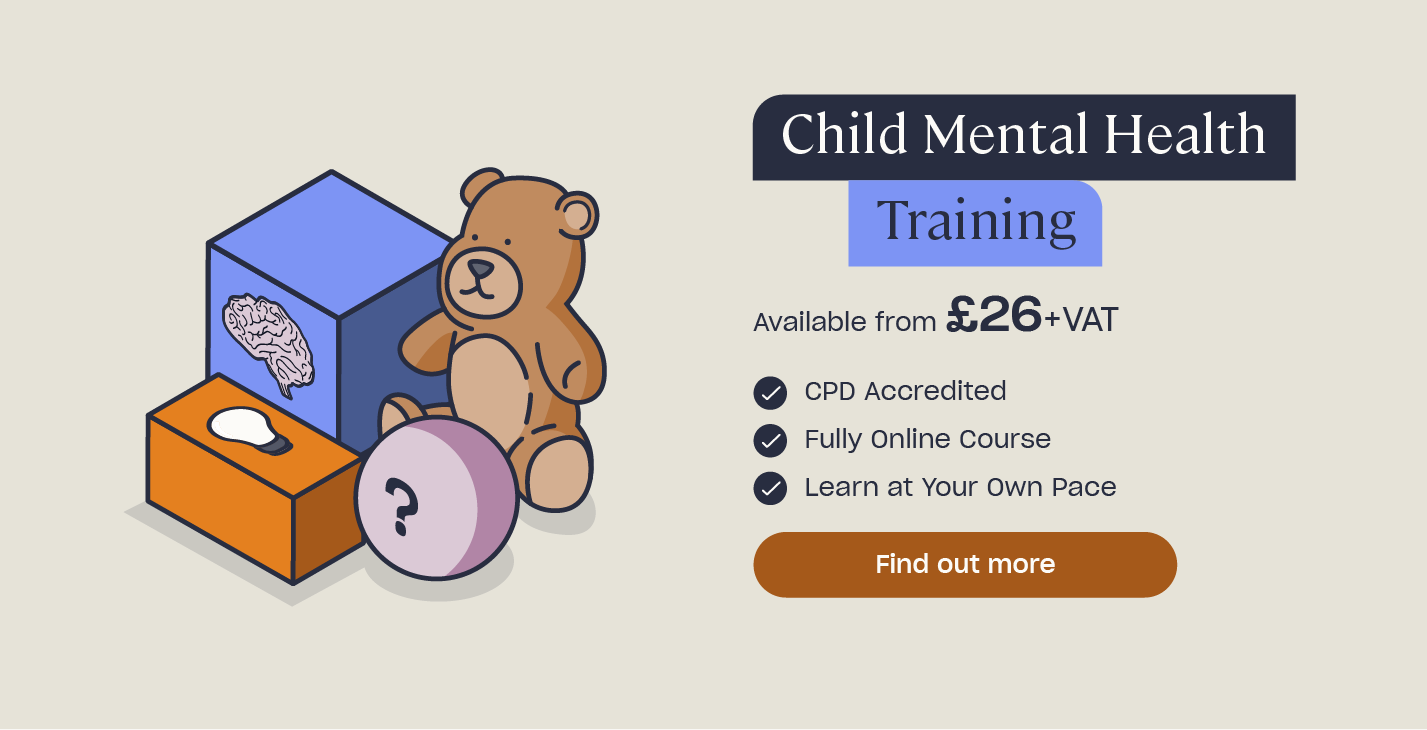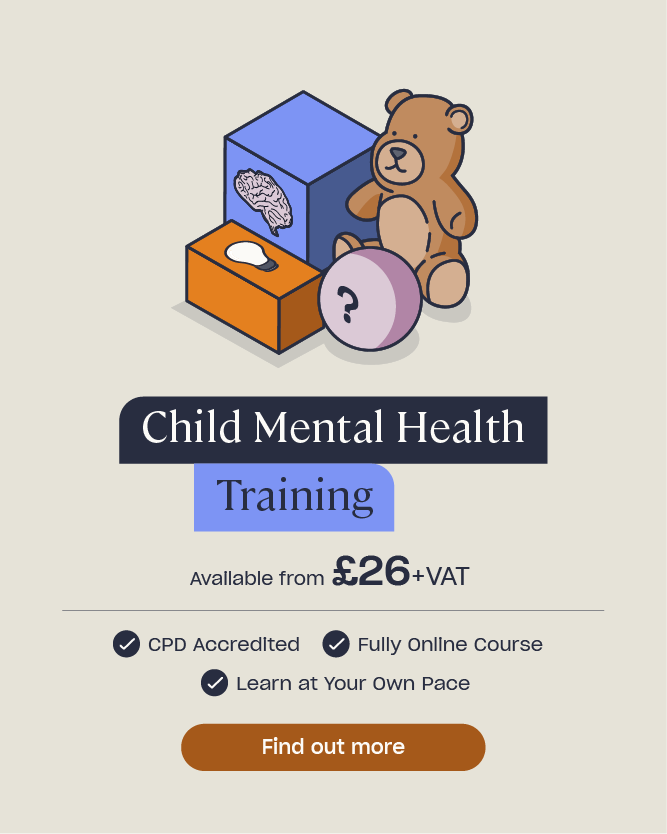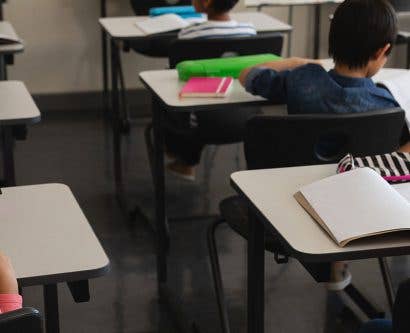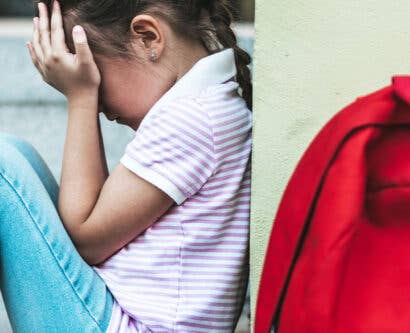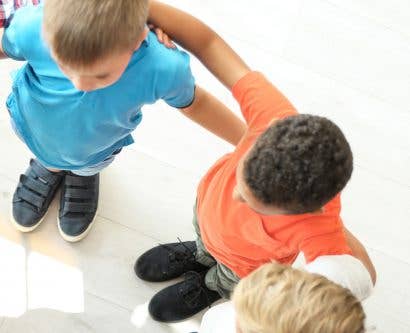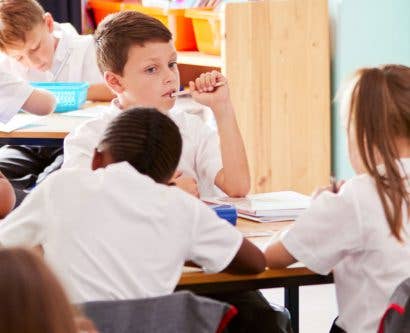How to Help a Child With Separation Anxiety at School
It is normal for young children to sometimes feel worried or upset when separated from their parents or caregivers, particularly within the first 2 years of school. Some children, however, feel this anxiety far more extremely and over a prolonged period of time. These more drastic difficulties can be caused by Separation Anxiety Disorder.
School separation anxiety can be experienced by a child of any age and can dramatically impact their academic life, causing them to become more isolated from their peers and unenthusiastic about learning and participating in activities at school. Because of these worrying effects, it’s important that teachers and school staff are able to spot the signs of separation anxiety early, and know how to help safeguard these individuals.
In this article, we will explain what separation anxiety at school is, give expert advice on how to spot signs of it in students, and provide tips for how you can help children suffering from separation anxiety in your school.
School Separation Anxiety
Separation anxiety in children is the experience of getting anxious or distressed when separated from their parent or primary caregiver. To demonstrate their concern, children might cry when dropped off at school, or may get fussy when another adult is holding them.

Separation anxiety is a normal part of development, and a typical phase amongst infants and toddlers. Between the ages of 4-7 months, children begin to realise that objects and people exist even when they’re out of their sight. Thus, they learn that when they can’t see their parents or caregiver, this means they’ve been left by them. As they can’t yet understand the concept of time, they aren’t aware that this person will come back and therefore become upset by their absence.
Whilst this form of separation anxiety is common, it usually improves by the time a child is around 2-3 years of age. Whilst older children will occasionally feel some separation anxiety and not want a parent to leave, particularly when being dropped off at school, this can usually be overcome by distracting the child. If, however, an older child displays symptoms of extreme and ongoing separation anxiety that is impacting their daily life, this may be a sign of a more serious issue called Separation Anxiety Disorder.
Separation Anxiety Disorder is seen in 4% of children and 1.6% of adolescents, which makes it the most prevalent anxiety disorder among children under the age of 12. This is just one form of mental health issue currently common in children. Read our article on How to Promote Positive Mental Health in Schools to find tools to help minimise the impacts of mental health in your classroom.
How to Spot Separation Anxiety at School
Separation anxiety at school typically occurs when children begin attending education, nursery, or daycare, and are separated from their parents or caregivers during drop-off time. Thus, it’s easiest to spot symptoms of separation anxiety during this time.
For a teacher, you can spot signs of separation anxiety in children by observing the following symptoms:
- Excessive crying when separated from their caregiver.
- Clinginess.
- Tantrums.
- Physical complaints such as stomach aches or headaches.
- A strong desire to be reunited with their parents or caregiver.
Whilst these symptoms are common and can usually be eased fairly simply, it’s important to closely monitor children displaying signs of separation anxiety in case they develop into something more serious, such as Separation Anxiety Disorder.

The main differences between separation anxiety and Separation Anxiety Disorder are the intensity of the child’s fears, and whether these fears begin to impact a child’s day-to-day life. A child may have a more challenging form of separation anxiety if you begin to observe more extreme symptoms, such as:
- Refusing to be left at school, also known as school refusal.
- Finding it hard to concentrate.
- Not eating properly.
- Getting frequently angry or irritable and losing control during outbursts.
- Constantly worrying or having negative thoughts, particularly around losing a loved one to illness or an accident, or getting lost or kidnapped themself.
In severe cases, separation anxiety disorder may occur alongside frequent panic attacks, causing a child to have sudden and repeated bouts of terror that peak within minutes.
Whilst these signs are largely displayed during separation from their parents or caregiver, children with Separation Anxiety Disorder may begin to display symptoms at the mere thought of being away from their loved ones.
Although Separation Anxiety Disorder can develop with no apparent reason, given its intensity it is often brought on by a particular event or trauma. It can be useful to try to identify what may be causing a child’s anxiety, as this will help you to understand their emotions and provide the best place to start helping to ease their fears. Possible causes of Separation Anxiety Disorder may include:
- A change in environment – Children can be very unsettled by a change to their routine, such as moving to a new home or a different school.
- A stressful scenario – Whether this is an academic situation such as exams, or a domestic scenario like a family divorce or bereavement, undergoing stress can have a myriad of complicated side-effects for children.
- Parental stress/anxiety – Children often feed off of their parents or caregivers emotions, and thus their separation anxiety could be a manifestation of their parents own stress. Furthermore, it has been suggested that children could inherit Separation Anxiety Disorder from parents who struggle with anxiety or another mental health issue.
Want to Learn More?
Our expert Child Mental Health Training can help you spot the signs of a range of mental health issues commonly suffered by children, and teach you useful strategies to help a child who may be suffering with their mental wellbeing.
Separation Anxiety Tips for Teachers
If you begin to notice signs of separation anxiety in any of the children under your care, as a teacher it is important to make the child’s parents or caregivers aware of your concerns. Having said this, it’s also vital not to label a child with a specific condition such as Separation Anxiety Disorder until they’ve received a professional diagnosis.
Once you’re aware of a child’s anxiety, you can begin to identify what may be causing their concerns, and implement strategies to help them. Below are a few things you can do as a teacher to help a child battling with separation anxiety, you can find more tips in our article on How to Help a Child With Anxiety in the Classroom.
Be the primary point of contact
It’s important that a child with separation anxiety can build a sense of trust and a feeling of safety with you as a teacher. Therefore, you should ensure you’re consistently the first person to greet an anxious child in the morning when they’re dropped off at school. Not only does this help to establish a routine for the child to adapt to, it also helps you get to know their parent/caregiver more and build this other important relationship.
Communicate with parents/caregivers and healthcare professionals
It can be beneficial to closely monitor a child that you believe is experiencing separation anxiety, and keep notes of how the child reacts to certain events or triggers, such as being dropped off at school, as well as observing how this is impacting their wellbeing and learning. The more information you can gather and translate back to the child’s caregivers, the better you will be able to understand exactly what the child is experiencing and use this information to help support them.
If the child is seeing a healthcare professional outside of school, it may be worth seeing if you can communicate with them in order to establish shared goals and identify ways you can best help extend support strategies within their school environment.
Provide a calm space catered to relieving stress
Having a calming private environment where anxious children can go to try to regulate their emotions is a great addition to any classroom. To make this space calming, it should be quiet and largely undisturbed, and may contain stress-relieving items such as sensory or fidget toys, stress balls, or books and games that a child can sit and direct their focus on, helping to relieve their busy mind.

Minimise morning rush and practise mindfulness
To help prevent the exacerbation of a child’s anxieties, it’s important to create a quiet routine for arrival at school and other busy times during the academic day. It can be helpful to play relaxing music and engage your whole class in group mindfulness or meditation activities, such as reading aloud to them, practising breathing exercises, or group colouring. Whilst this can benefit every child to help calm down after excitable or stressful times of day, particularly after they’ve been dropped off or after they’ve come in from break, it also provides an opportunity to help ease a child with separation anxiety’s fears at key trigger points without isolating them from the rest of the group.
Use language to your advantage
When working with a child who struggles with separation anxiety, be careful not to dismiss their emotions and steer away from them. Instead, you should let the child speak about what is upsetting them and validate their feelings, as this will help them to work through them in a more healthy way.
It can be useful to come up with a phrase that can be used by the child, their families, and other school staff, such as “after school, I get to see my family.” This can work as a calming affirmation to remind the child that their parent’s absence is temporary, but that it’s okay to feel sad about being separated.
Furthermore, and perhaps the most beneficial use of language to help ease separation anxiety, you could encourage the child and parents to say ‘“see you later” or “see you soon” rather than “goodbye” when parting ways at the school entrance. Although this may seem like a small distinction, the subtle change reassures the child that their families will return before too long.
Use comfort items
Allowing a child with separation anxiety to come to school with a comforting item from home, such as a favourite cuddly toy or a family photo, can make a huge difference in helping to ease their anxiety. This serves as a reminder of home, helping them to realise they’re not actually very far away from their families.
Separation anxiety is common in young children, and is often resolved by the time a child reaches school. This isn’t always the case, however, as even older children can have periods of anxiety when leaving their families to enter school. Separation anxiety at school should be closely monitored, as it manifests itself in a range of different ways, and sometimes can develop into a more serious condition known as Separation Anxiety Disorder. Luckily there are many methods that teachers can try to help children cope with separation anxiety and ease their symptoms.
Further Resources:
- How to Support Children with Attachment Disorder
- How to Help a Child With Anxiety in the Classroom
- How to Promote Positive Mental Health in Schools
- How to Create a Positive Learning Environment


